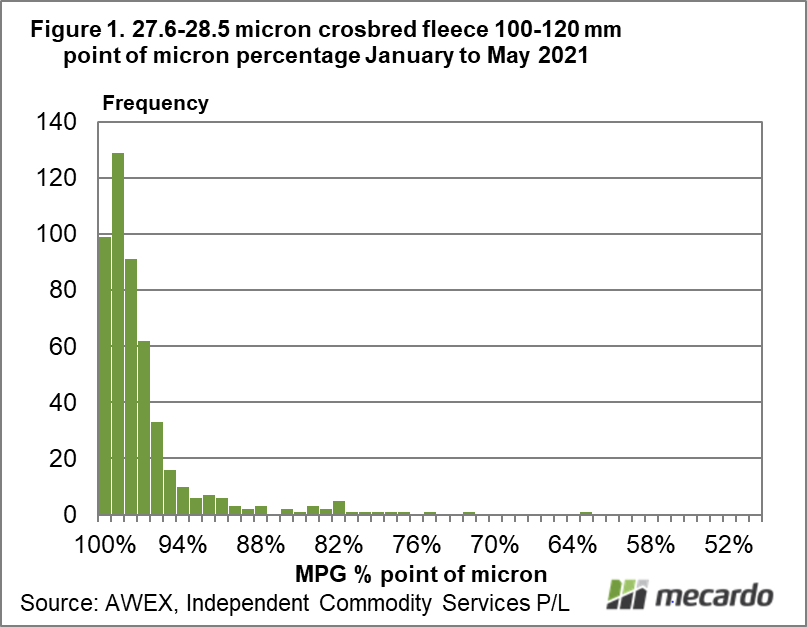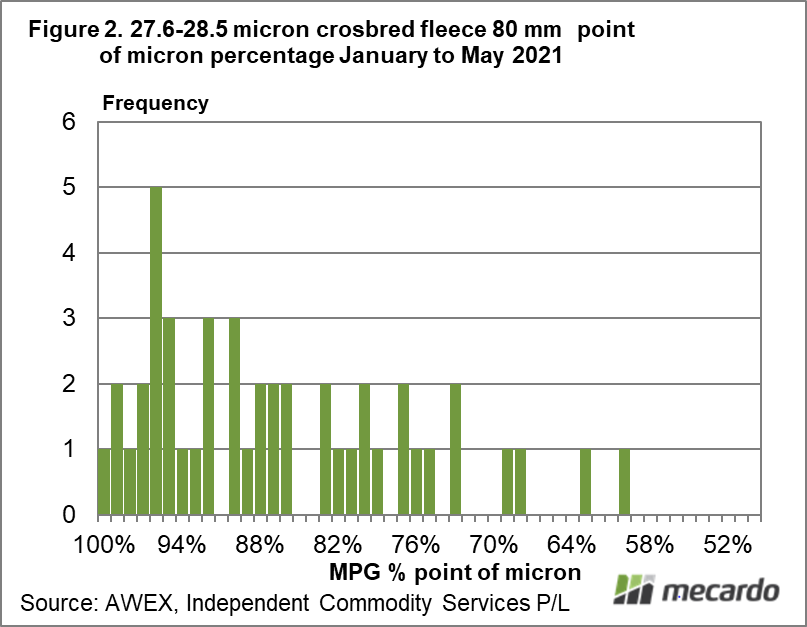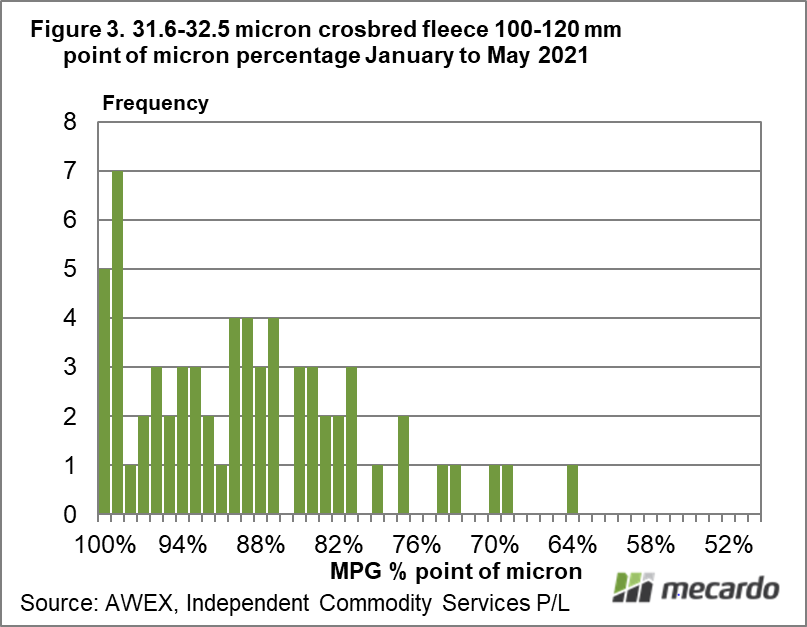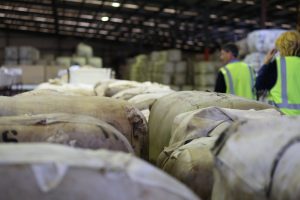A reader has asked Mecardo to look at crossbred wool prices due to the wide range of prices paid for a given combination of category, staple length and fibre diameter. Breed and preparation appear to be heavily influencing values leading to these wide ranges in price.
Four to five year ago valuing full length crossbred fleece was a lot easier than it has been in recent seasons. Part of the reason is the weakness in demand now compared to the relatively strong demand and high prices of the 2011 through 2019 period. In the past, Mecardo has pointed out issues of increased supplies of unskirted crossbred wool, with attendant quality problems. This issue is still with us, and is likely to be intensified by the depressed prices for crossbred wool. The other quality issue has been wool from composite sheep, which have varying levels of downs (kemp) like wool. Unfortunately for composite growers this wool is too long for use in the downs system, and the presence of downs like wool means it is not a true crossbred type. In this sense it is an orphan, a low quality by product of prime lamb production.
In theory it should be easy enough to identify these lots at sale, and compare their prices to standard crossbred types in order to determine the discounts applicable to wool from composite sheep which is often unskirted. However, as the AWEX ID is now applied, there is no category for these lots. Some brokers will put “DNX” in the comments for sale lots as a composite flag but this is applied to only a small proportion of lots. You can see their presence by the variation in price, but they cannot be extracted on paper by the mix of objective tests and subjective assessment which is provided in sale catalogues. Exporters and brokers will see them in sample boxes and make allowances, but on paper they are something of a phantom.
So, to answer the query which sparked this article, we will work backwards from price. Figure 1 shows a frequency distribution for full length (100-120 mm) 28 micron crossbred fleece wool sold since Christmas, with vegetable matter limited to 2% maximum. The distribution is of prices expressed as a percentage of their point of micron MPG price level for each day. This is not perfect but it does allow an improved comparison of wool prices across the full micron range and between days. Out of 488 lots some 319 (about two thirds) sold for 98% or more of the indicator. If a lot is presented for sale with poor preparation and/or lumps of kemp in it then it is a reasonable expectation that the price will end up in the tail of this distribution somewhere between 80% and 95% of the MPG.
Figure 2 shows us, how as staple length shortens for crossbred wool, price variability increases. Beauty is truly in the eye of the buyer who has seen the sample. Figure 2 repeats the analysis of Figure 1 except the staple length is restricted to 80 mm. That distribution is a realistic picture of the wide range of prices paid, making valuing quite difficult.
A lot of composite wool tends to be broader than the standard crossbred categories so Figure 3 repeats the analysis for full length 32 micron fleece. The distribution is not as bad as the 80 mm length wool in Figure 2 but it is quite varied. There is quite a proportion of wool selling for 80-90% of the indicator, which in the current market where the 32 MPG is around 200 cents works out as a discount of 20-40 cents clean.
What does it mean?
The impact of poor preparation and /or the presence of kempy wool on the value of a sale lot depends on the underlying qualities of the lot in terms of fibre diameter and staple length. In the longer run there is an argument that the wool industry would be better off without such wool being available.
Have any questions or comments?
Key Points
- Calculating the price effect of poor preparation and/or the presence of composite wool in a sample is not really possible on paper (from the sale catalogue).
- The distribution of price does increase as the crossbred micron broadens and also increases markedly as the staple length shortens.
- The depressed prices for broad crossbred wool means that any discounts for poor preparation and/or kempy wool will be small in cents per kg terms.
Click on figure to expand
Click on figure to expand
Click on figure to expand
Data sources: AWEX, ICS, Mecardo















